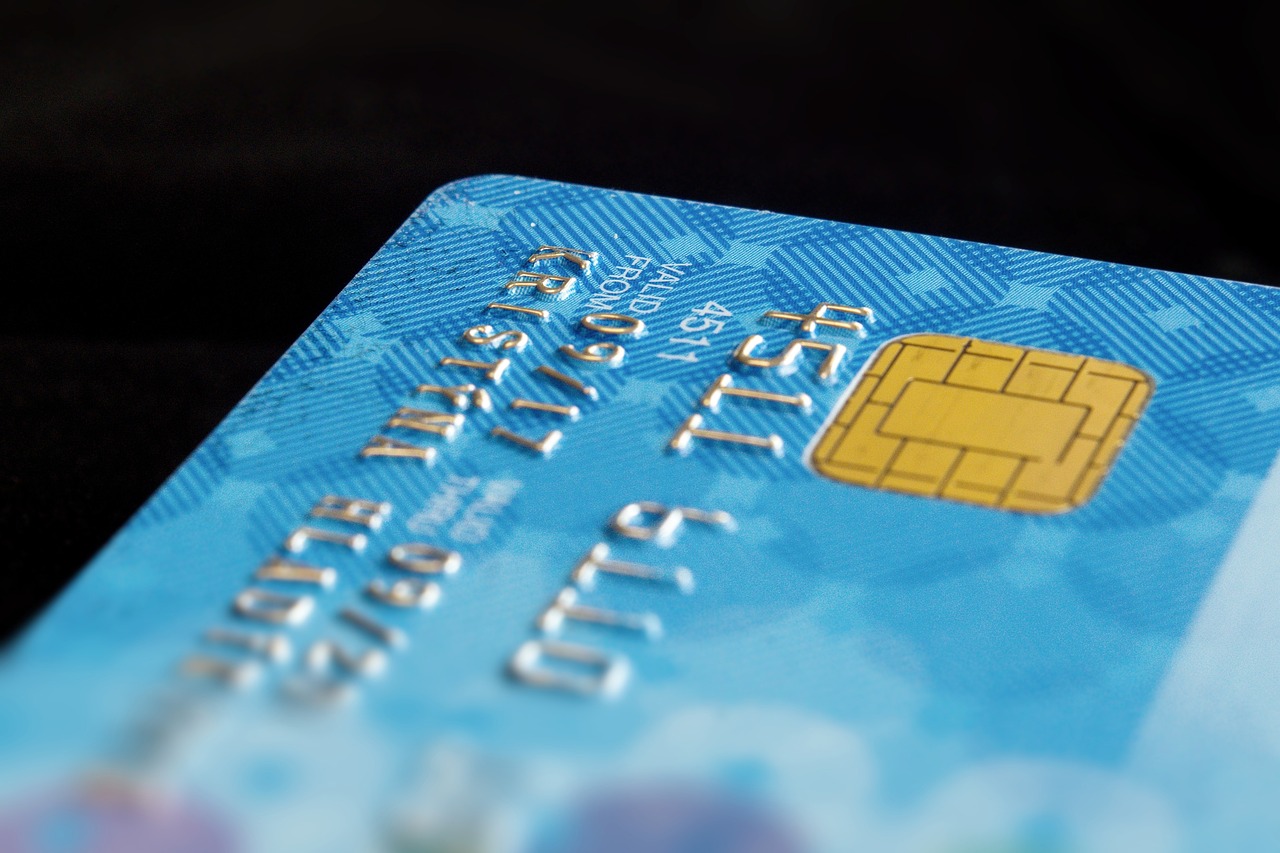This is How to Improve Your Credit Score to Buy a House Fast

If you’re embarking on the journey to homeownership, congratulations! If you’re doing it for the first time, way to go! Buying a house is a big deal. But, it’s not as far out of reach as you might think.
While I won’t share any advice about market conditions or shopping for property today, I do want to explain how you can improve your credit score to buy a house. And, I will explain how to do it quickly.
First, I’ll give you all the background information you need. Then, I’ll explain how to take the right steps to boost your credit score. What you do with this information is up to you.
Here’s What’s in store:
- What Credit Score Do You Need to Buy a House?
- Is There a Way to Raise Your Credit Score 100 Points Overnight?
- How Can You Fix Your Credit Score Fast?
- Frequently Asked Questions
- Conclusion
Alright, let’s go!
What Credit Score Do You Need to Buy a House?
First things first: For most mortgages, you’ll need a credit score of at least 620 to buy a house. However, this isn’t set in stone. Some mortgages require a bit less from buyers.
But, there’s a catch — If your credit score is below 620, and you qualify for an alternative mortgage (that doesn’t require a full, 20% down payment), you’ll likely need to pay private mortgage insurance (PMI). A PMI will create an additional expense on top of your principal, interest, and homeowner’s insurance.
PMI can cost from $50 to upwards of $900 per month, depending on the amount of your loan and your credit score. As credit scores increase, the PMI rates tend to be lower.
Here are some estimates of how your credit score could affect your monthly PMI payment:
| Cost of Mortgage | Credit Score | Duration of Loan | Down Payment | Estimated PMI Rate | Estimated Monthly PMI Cost |
| $150,000 | 700 | 30 years | 10% | 0.5% – 1.5% | $56.25 – $168.75 |
| $250,000 | 750 | 15 years | 15% | 0.5% – 1.5% | $78.13 – $234.38 |
| $350,000 | 680 | 20 years | 5% | 0.5% – 1.5% | $91.67 – $275.00 |
| $200,000 | 620 | 25 years | 8% | 1.0% – 2.0% | $166.67 – $333.33 |
| $300,000 | 580 | 30 years | 3% | 1.5% – 3.0% | $375.00 – $900.00 |
These estimates are for general informational purposes, and actual rates will absolutely vary — It’s important to consult with lenders for accurate and personalized information.
You might also like: Sky Blue Credit Review: Is This Your Answer to Credit Repair?
Which Mortgages Can You Get With a Low Credit Score?
As I said above, there are absolutely mortgages for people with lower credit scores — But, no mortgage is exempt from PMI if you make a down payment less than 20%.
These government-backed mortgage options provide opportunities for individuals with low credit scores to access mortgage financing:
1. FHA Loans: Minimum Credit Score: 500-580 (varies by lender)
FHA loans are government-backed and more accessible for borrowers with low credit. A credit score of 580 or higher typically qualifies for a lower down payment.
FHA Requirements – More Information
2. VA Loans: Minimum Credit Score: 580 (varies by lender)
VA loans are for veterans and active-duty military members. While there’s no official minimum score, most lenders prefer 580 or higher.
3. USDA Loans: Minimum Credit Score: 640 (varies by lender)
USDA loans are designed for low to moderate-income borrowers in rural areas. A credit score of 640 or higher is often required.
USDA Loan Eligibility – More Information
Again, interest rates and terms will vary…always consult with a lender for accurate rates.
Recommended: Applying for a Mortgage? How to Repair Your Credit
Is There a Way to Raise Your Credit Score 100 Points Overnight?
Okay, so I don’t want to get you set on unrealistic goals; there is no way to actually raise your credit score 100 points overnight. However, there are actions you can take, before tomorrow, to increase your credit score within a month or less.
The first and easiest way to boost your score quickly – and for free – is through Experian Boost. Just by establishing an account, you can increase your Experian credit score (this won’t affect Transunion or Equifax scores). Then, you can connect your bank account and opt to report select bill payments to the credit bureaus.
Note: Experian also offers a free credit freeze, which has pros and cons.
Second, if you have cash, you can pay your accounts down below the 30% utilization threshold. Since credit utilization is one of the key determining factors for your credit scores, this can have a major impact. If your total utilization is below 30%, you’re more likely to have a higher score (I’ll share more on this in just a minute).
However, if your accounts are already below the 30% mark, utilization isn’t hindering your score to begin with, so you’ll need to explore other options.
The next steps will depend on where you’re at in your credit journey. For example, if you have a ton of collections, you may be able to dispute some of them. Or, if you don’t have many accounts to speak of, you may be able to apply for another credit card – be very careful with this, because if you fail to pay the card as agreed, you will get yourself into an even bigger mess.
You might also like: This is How to Get the Most from Experian Boost Rent +More
How Can You Fix Your Credit Score Fast?
Embarking on a journey to fix your credit on your own? Great choice! It’s not as daunting as it may seem. Let’s break down the key steps to DIY credit repair in a way that’s manageable and, dare I say, a bit fun.
Recommended: DIY Credit Repair Demystified: It’s Not as Hard as You Think
1. Learn Your Rights
Start your credit repair journey by getting acquainted with the Fair Credit Reporting Act (FCRA). This crucial step empowers you to access your credit reports free of charge every year from major credit bureaus like Experian, Equifax, and TransUnion.
By understanding the FCRA, you gain the authority to dispute any inaccuracies you might discover on your credit reports. This foundational knowledge not only gives you insight into your credit health but also provides you with the tools to take action and ensure the accuracy of your credit information.
Recommended: Top 8 Best Credit Repair Books of All Time +Free Resources
2. Obtain Copies of Your Credit Reports
Head on over to AnnualCreditReport.com to effortlessly obtain your credit reports (for free). Ensure you get a comprehensive understanding of your financial standing by securing reports from all three major credit bureaus.
This straightforward process allows you to access a complete and detailed overview of your credit history. By obtaining reports from multiple bureaus, you set yourself up for a thorough examination, enabling you to identify any discrepancies and take informed steps toward improving your credit health.
It’s a simple yet crucial move on your DIY credit repair journey.
3. Note & Dispute Inaccuracies
Dive into the details of your credit reports with precision. If you come across anything suspicious or inaccurate, make a thorough list.
The next crucial step is to articulate your findings by drafting a letter to the credit bureaus or utilizing their online dispute forms. Clearly explain the errors you’ve identified and provide any supporting evidence you may have.
Patience is a vital virtue during this phase as the credit bureaus typically have 30 days to investigate and rectify the discrepancies. By meticulously documenting and addressing these inaccuracies, you’re actively taking charge of your credit repair process, laying the foundation for a more accurate reflection of your financial history.
4. Get Accurate Negative Marks Removed
If you’re willing to bide your time, waiting is a viable approach, as certain negative marks tend to naturally fade away after a couple of years. However, if you prefer a more proactive stance, consider engaging with your creditors in negotiations for a “pay to delete” agreement.
This involves reaching out to your creditors and proposing the removal of negative remarks, such as late payments, in exchange for settling the account in full. It’s a legal and legitimate approach recognized under the Fair Credit Reporting Act (FCRA).
While it’s not a guaranteed solution and depends on the creditor’s willingness, negotiating a “pay to delete” agreement offers you an active role in shaping your credit history. It’s a strategy that can be worth considering as part of your comprehensive credit repair efforts.
Recommended: The Truth Behind the “Pay to Delete” Letter
5. Establish Optimal Payment History
Paying your bills on time is akin to acing the class in the school of credit repair — Make a habit of marking those due dates on your calendar, setting up reminders on your phone, or even using automatic payments to ensure punctuality.
While paying the minimum amount due on credit cards might keep you out of trouble, consider going the extra mile by paying a bit more; this not only showcases responsibility but also contributes to a faster improvement in your credit score. Building a stellar payment history is a gradual process that requires consistency and commitment.
Similar to the construction of Rome, achieving a top-tier credit history takes time and steady effort. So, stay persistent, stay on top of those payments, and watch your credit report shine with a robust payment history over time.
6. Optimize Your Credit Utilization Ratio
Once more, maintaining credit card balances below 30% of their limits is a savvy move in the game of credit repair. Consider it like earning extra credit – it signals to credit bureaus that you’re not maxing out your cards, a positive indicator for your credit health.
If you find yourself exceeding the 30% utilization threshold, you have a couple of strategic options.
- Firstly, you can work on paying down existing balances, a prudent step to improve your credit utilization ratio.
- Alternatively, if increasing your credit limits aligns with your financial plan, proceed cautiously. However, it’s crucial to avoid the temptation of overspending on new credit lines, as this could complicate your debt repayment journey.
Striking the right balance is key – optimizing your credit utilization without succumbing to the pitfalls of additional debt.
Frequently Asked Questions
There’s no specific timeframe, but experts recommend having a solid credit history for at least a year or two. A longer positive credit history often leads to a better mortgage rate.
After fixing your credit, it can take a few months to see improvements. However, the exact timeline varies. Consult with a mortgage professional to assess when it’s suitable to apply for a mortgage.
A credit score drop before closing can affect your mortgage approval or interest rate. Inform your lender immediately, as they may need to reassess your loan terms or, in extreme cases, deny the mortgage.
Opening a mortgage may initially cause a slight dip in your credit score due to the hard inquiry and new credit account. However, responsible mortgage payments can positively impact your score over time.
Yes, you can hire credit repair services, but be cautious. While legitimate services exist, some are scams. Understand your rights, review their practices, and consider improving your credit on your own or with reputable guidance.
You might also like: ASAP Credit Repair – Don’t Sign Up Until You Read This
Conclusion
As you embark on the exciting journey of buying a house, understanding how to swiftly improve your credit score is crucial — With a minimum credit score of 620 often required for mortgages, it’s essential to explore options and be aware of potential costs like private mortgage insurance (PMI) for scores below this threshold.
While the notion of boosting your credit score by 100 points overnight is a bit of a myth, actionable steps, such as using Experian Boost and managing credit utilization, can lead to significant improvements within a month.
A DIY credit repair journey involves understanding your rights, obtaining and scrutinizing your credit reports, and actively disputing inaccuracies. Building an optimal payment history and managing your credit utilization contribute to a stellar credit profile.
In essence, improving your credit score is a worthwhile journey that can enhance your home-buying experience.
To dive into the world of credit repair and get that credit score up fast so you can move forward with your life, check out Credit Secrets and start your journey to better financial health.
Ashley Kimler
What's Trending








